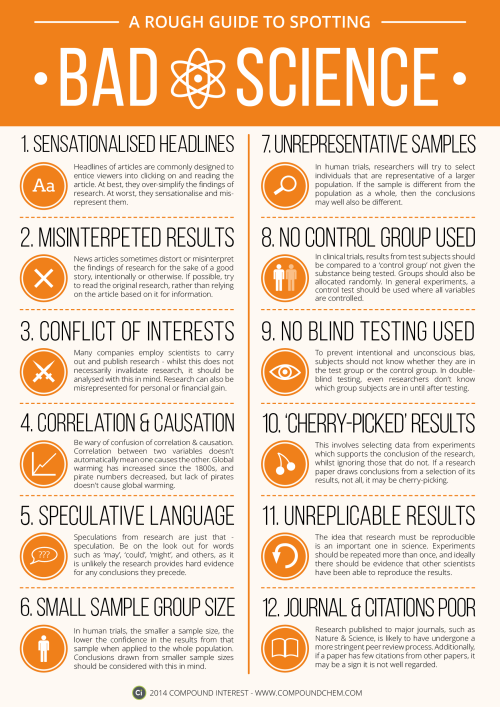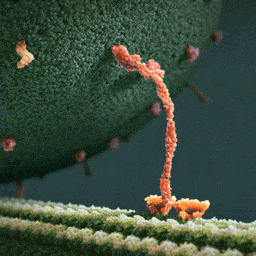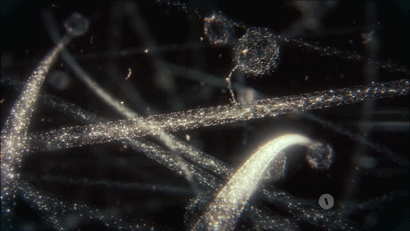For More Posts Like These, Go To @mypsychology







For more posts like these, go to @mypsychology
More Posts from Science-is-magical and Others

One of the best ways to get people to do something is to make it fun. A marketing campaign called ‘The Fun Theory’ found that when stairs next to an escalator were turned into giant, functional piano keys, the amount of people who took the stairs increased 66%, and when a trash can had sound effects that made it seem infinitely deep, people started picking up and throwing away litter just to hear it. Source
Francium (new video) - Periodic Table of Videos
Interesting video on the element Francium and its discoverer Marguerite Perey.

A Powerful Solar Flare : It was one of the most powerful solar flares in recorded history. Occurring in 2003 and seen across the electromagnetic spectrum, the Sun briefly became over 100 times brighter in X-rays than normal. The day after this tremendous X 17 solar flare – and subsequent Coronal Mass Ejection (CME) – energetic particles emitted from the explosions struck the Earth, creating auroras and affecting satellites. The spacecraft that took these frames – SOHO – was put in a turtle-like safe mode to avoid further damage from this and subsequent solar particle storms. The featured time-lapse movie condenses into 10 seconds events that occurred over 4 hours. The CME, visible around the central sun-shade, appears about three-quarters of the way through the video, while frames toward the very end are progressively noisier as protons from the explosions strike SOHO’s LASCO detector. One this day in 1859, the effects of an even more powerful solar storm caused telegraphs on Earth to spark in what is known as the Carrington Event. Powerful solar storms such as these may create beautiful aurora-filled skies, but they also pose a real danger as they can damage satellites and even power grids across the Earth. via NASA

Version 1 of ‘A Rough Guide to Spotting Bad Science’. Thanks for everyone’s suggestions earlier in the week, attempted to include as many of them as possible!
Download link here: http://wp.me/p4aPLT-ap


Your body is an incredibly bizarre machine.
“What you see is a myosin protein dragging an endorphin along a filament to the inner part of the brain’s parietal cortex which creates happiness. Happiness. You’re looking at happiness.”
Reblog if you ARE a woman in STEM, SUPPORT women in STEM, or ARE STILL BITTER about Rosalind Franklin not getting credit for discovering the structure of DNA and the Nobel prize going to Watson and Crick instead.



Life from the perspective of colour blind people
Deuteranomalia: This is caused by reduced sensitivity to green light. Deutan color vision deficiencies are by far the most common forms of color blindness. This subtype of red-green color blindness is found in about 6% of the male population, mostly in its mild form deuteranomaly.
Protanopia: Caused by a reduced sensitivity to red light due to either defective or a lack of long -wavelength cones (red cones). Some scientists estimate that being a protan is associated with a risk of a road accident equivalent to having a blood alcohol level of between 0.05 and 0.08 per cent.
Tritanopia: People affected by tritan color blindness confuse blue with green and yellow with violet. This is due to a defective short-wavelength cone (blue cone). Whilst Protanopia and Deuteranomalia are significantly more common in men, tritanopia affects both sexes in equal amounts.
Monochromacy: Only around 0.00003% of the world’s population suffers from total color blindness, where everything is seen in black and white.
A neural network invents some pies

(Pie -> cat courtesy of https://affinelayer.com/pixsrv/ )
I work with neural networks, which are a type of machine learning computer program that learn by looking at examples. They’re used for all sorts of serious applications, like facial recognition and ad targeting and language translation. I, however, give them silly datasets and ask them to do their best.
So, for my latest experiment, I collected the titles of 2237 sweet and savory pie recipes from a variety of sources including Wikipedia and David Shields. I simply gave them to a neural network with no explanation (I never give it an explanation) and asked it to try to generate more.
Its very first attempt left something to be desired, but it had figured out that "P”, “i”, and “e” were important somehow.
e Piee i m t iee ic ic Pa ePeeetae a e eee ema iPPeaia eieer i i i ie e eciie Pe eaei a
Second checkpoint. Progress: Pie.
Pie Pee Pie Pimi Pie Pim Cue Pie Pie (er Wie Pae Pim Piu Pie Pim Piea Cre Pia Pie Pim Pim Pie Pie Piee Pie Piee
This is expected, since the word “pie” is both simple and by far the most common word in the dataset. It stays in the stage above for rather a while, able to spell only “Pie” and nothing else. It’s like evolution trying to get past the single-celled organism stage. After 4x more time has elapsed, it finally adds a few more words: “apple”, “cream”, and “tart”. Then, at the sixth checkpoint, “pecan”.
Seventh checkpoint: These are definitely pies. We are still working on spelling “strawberry”, however.
Boatin Batan Pie Shrawberry Pie With An Cream Pie Cream Pie Sweesh Pie Ipple Pie Wrasle Cream Pie Swrawberry Pie Cream Pie Sae Fart Tart Cheem Pie Sprawberry Cream Pie Cream Pie
10th checkpoint. Still working.
Coscard Pie Tluste Trenss Pie Wot Flustickann Fart Oag’s Apple Pie Daush Flumberry O Cheesaliane Rutter Chocklnd Apple Rhupperry pie Flonberry Peran Pie Blumbberry Cream Pie Futters Whabarb Wottiry Rasty Pasty Kamphible Idponsible Swarlot Cream Cream Cront
16th checkpoint. Showing some signs of improvement? Maybe. It thinks Qtrupberscotch is a thing.
Buttermitk Tlreed whonkie Pie Spiatake Bog Pastry Taco Custard Pie Apple Pie With Pharf Calamed apple Freech Fodge Cranberry Rars Farb Fart Feep-Lisf Pie With Qpecisn-3rnemerry Fluit Turd Turbyy Raisin Pie Forp Damelnut Pie Flazed Berry Pie Figi’s Chicken Sugar Pie Sauce and Butterm’s Spustacian Pie Fill Pie With Boubber Pie Bok Pie Booble Rurble Shepherd’s Parfate Ner with Cocoatu Vnd Pie Iiakiay Coconate Meringue Pie With Spiced Qtrupberscotch Apple Pie Bustard Chiffon Pie
Finally we arrive at what, according to the neural network, is Peak Pie. It tracks its own progress by testing itself against the original dataset and scoring itself, and here is where it thinks it did the best.
It did in fact come up with some that might actually work, in a ridiculously-decadent sort of way.
Baked Cream Puff Cake Four Cream Pie Reese’s Pecan Pie Fried Cream Pies Eggnog Peach Pie #2 Fried Pumpkin Pie Whopper pie Rice Krispie-Chiffon Pie Apple Pie With Fudge Treats Marshmallow Squash Pie Pumpkin Pie with Caramelized Pie Butter Pie
But these don’t sound very good actually.
Strawberry Ham Pie Vegetable Pecan Pie Turd Apple Pie Fillings Pin Truffle Pie Fail Crunch Pie Crust Turf Crust Pot Beep Pies Crust Florid Pumpkin Pie Meat-de-Topping Parades Or Meat Pies Or Cake #1 Milk Harvest Apple Pie Ice Finger Sugar Pie Amazon Apple Pie Prize Wool Pie Snood Pie Turkey Cinnamon Almond-Pumpkin Pie With Fingermilk Pumpkin Pie With Cheddar Cookie Fish Strawberry Pie Butterscotch Bean Pie Impossible Maple Spinach Apple Pie Strawberry-Onions Marshmallow Cracker Pie Filling Caribou Meringue Pie
And I have no what these are:
Stramberiy Cheese Pie The pon Pie Dississippi Mish Boopie Crust Liger Strudel Free pie Sneak Pie Tear pie Basic France Pie Baked Trance pie Shepherd’s Finger Tart Buster’s Fib Lemon Pie Worf Butterscotch Pie Scent Whoopie Grand Prize Winning I*iple Cromberry Yas Law-Ox Strudel Surf Pie, Blue Ulter Pie - Pitzon’s Flangerson’s Blusty Tart Fresh Pour Pie Mur’s Tartless Tart
More of the neural network’s attempts to understand what humans like to eat:
Perhaps my favorite: Small Sandwiches
All my other neural network recipe experiments here.
Want more than that? I’ve got a bunch more recipes that I couldn’t fit in this post. Enter your email here and I’ll send you 38 more selected recipes.
Want to help with neural network experiments? For NaNoWriMo I’m crowdsourcing a dataset of novel first lines, after the neural network had trouble with a too-small dataset. Go to this form (no email necessary) and enter the first line of your novel, or your favorite novel, or of every novel on your bookshelf. You can enter as many as you like. At the end of the month, I’ll hopefully have enough sentences to give this another try.

(Image caption: In this illustration, a pair of eyeglasses “resolves” distinct serotonin neuron subtypes (shown as brightly colored cells) on a simple map of a region called the raphe in the mouse brain. By viewing serotonin neurons through multiple “lenses”—such as single-neuron and population-scale global gene expression, developmental lineage and anatomy—researchers have revealed diverse subtypes and principles of subtype organization in the brain. Credit: Mallory Rice)
Time for a New Definition
It used to be enough to call a serotonergic neuron a serotonergic neuron.
These brain cells make the neurotransmitter serotonin, which helps regulate mood, appetite, breathing rate, body temperature and more.
Recently, however, scientists have begun to learn that these neurons differ from one another—and that the differences likely matter in dysfunction and disease.
Last year, a team led by Harvard Medical School genetics professor Susan Dymecki defined a subgroup of serotonergic neurons in mice by showing that those cells specifically, among all serotonergic neurons, were responsible for increasing the breathing rate when too much carbon dioxide builds up in the body.
Now, Dymecki and colleagues have taken a first stab at systematically characterizing serotonergic neurons at the molecular level and defining a full set of subtypes, again in mice.
The researchers report in Neuron that serotonergic neurons come in at least six major molecular subtypes defined by distinct expression patterns of hundreds of genes. In many cases, the subtypes modulate different behaviors in the body.
By conducting a cross-disciplinary series of experiments, the researchers found that the subtypes also vary in their developmental lineage, anatomical distribution, combinations of receptors on the cell surface and electrical firing properties.
“This work reveals how diverse serotonin neurons are at the molecular level, which may help to explain how, collectively, they are able to perform so many distinct functions,” said Benjamin Okaty, a postdoctoral researcher in the Dymecki lab and co-first author of the paper.
“To have the list of molecular players that make each of these subtypes different from one another gives us an important handle on learning more about what that cell type does and how we can manipulate only that subtype,” said Dymecki. “It holds enormous therapeutic potential.”
“This is an ancient neurotransmitter system that’s implicated in many different diseases, and it’s starting to be cracked open,” said Morgan Freret, a graduate student in the Dymecki lab and co-first author of the paper. “We can now ask questions in a more systematic way about which serotonergic cells and molecules are important in, for example, pain, sleep apnea or anxiety.”
Crucially, the team also showed that a serotonergic neuron’s gene expression and function depend not only on its location in the adult brain stem, but also on its cellular ancestor in the developing brain.
“Earlier work had shown that you could explore the relationship between a mature neuronal system and the different developmental lineages that gave rise to it, but we had no idea whether it was meaningful,” said Dymecki. “We show that the molecular phenotypes of these neurons track quite tightly to their developmental origin, with anatomy making some interesting contributions as well.”
While the work was done in mice, Dymecki is optimistic that it will be replicated in humans because the serotonergic neuronal system is in a highly conserved region of the brain, meaning it tends to remain consistent across vertebrate species.
Because of this, researchers can look for the same molecular signatures in human tissue and begin to tease apart whether particular subtypes of serotonergic neurons are involved in conditions such as sudden infant death syndrome (SIDS) or autism.
Such research could ultimately reveal previously unknown contributions of the serotonergic neuronal system to disease, inform the development of biomarkers or lead to more targeted therapies.
The team’s findings could also inform stem cell research. “Which subtype of serotonergic neuron are we getting when we use current stem cell protocols?” asked Dymecki. “Can we drive the development of different subtypes? Can we watch how gene expression patterns change over time during development for each subtype?”
Finally, the study provides an example of a highly integrative approach to understanding brain function at multiple scales, “linking genes and gene networks to the properties of single neurons and populations of neuron subtypes, all the way up to the level of animal behaviors,” said Okaty. “I think it’s a useful template going forward. Imagine what we’d learn by applying this approach to all the neurotransmitter systems in the brain.”
-
 woundedhealer-journey liked this · 3 months ago
woundedhealer-journey liked this · 3 months ago -
 vsellamani-blog reblogged this · 3 years ago
vsellamani-blog reblogged this · 3 years ago -
 woundedhealer-journey reblogged this · 3 years ago
woundedhealer-journey reblogged this · 3 years ago -
 chmans reblogged this · 5 years ago
chmans reblogged this · 5 years ago -
 theinsanityofamanatee liked this · 6 years ago
theinsanityofamanatee liked this · 6 years ago -
 for-the-collection liked this · 6 years ago
for-the-collection liked this · 6 years ago -
 endeavorny reblogged this · 6 years ago
endeavorny reblogged this · 6 years ago -
 short--insomniacs liked this · 6 years ago
short--insomniacs liked this · 6 years ago -
 talmidit reblogged this · 6 years ago
talmidit reblogged this · 6 years ago -
 raychle liked this · 7 years ago
raychle liked this · 7 years ago -
 rotterdamistanbul liked this · 7 years ago
rotterdamistanbul liked this · 7 years ago -
 moderndayfashionstatements-blog liked this · 7 years ago
moderndayfashionstatements-blog liked this · 7 years ago -
 ajapamworld liked this · 7 years ago
ajapamworld liked this · 7 years ago -
 altpupunx reblogged this · 7 years ago
altpupunx reblogged this · 7 years ago -
 sadgirlelle liked this · 7 years ago
sadgirlelle liked this · 7 years ago -
 daisyhtoo liked this · 7 years ago
daisyhtoo liked this · 7 years ago -
 exemptpotato liked this · 7 years ago
exemptpotato liked this · 7 years ago -
 kenisirc liked this · 7 years ago
kenisirc liked this · 7 years ago -
 aikuros liked this · 7 years ago
aikuros liked this · 7 years ago -
 kelsswewa-blog liked this · 7 years ago
kelsswewa-blog liked this · 7 years ago -
 luluami liked this · 7 years ago
luluami liked this · 7 years ago -
 poseiben reblogged this · 7 years ago
poseiben reblogged this · 7 years ago -
 poseiben liked this · 7 years ago
poseiben liked this · 7 years ago -
 star-dumb liked this · 7 years ago
star-dumb liked this · 7 years ago -
 alfred87 liked this · 7 years ago
alfred87 liked this · 7 years ago -
 thesalmontoruletheworld liked this · 7 years ago
thesalmontoruletheworld liked this · 7 years ago -
 desertb1loom liked this · 7 years ago
desertb1loom liked this · 7 years ago -
 ittakesrain liked this · 7 years ago
ittakesrain liked this · 7 years ago -
 d3mond4ys liked this · 7 years ago
d3mond4ys liked this · 7 years ago -
 aplacetosortoutmyhead liked this · 7 years ago
aplacetosortoutmyhead liked this · 7 years ago -
 upsidedownkoala liked this · 7 years ago
upsidedownkoala liked this · 7 years ago -
 societysonlooker reblogged this · 7 years ago
societysonlooker reblogged this · 7 years ago -
 fairytail-ship-obsessed liked this · 7 years ago
fairytail-ship-obsessed liked this · 7 years ago -
 aphrodisiac-amor liked this · 7 years ago
aphrodisiac-amor liked this · 7 years ago -
 watashiwa-a liked this · 7 years ago
watashiwa-a liked this · 7 years ago -
 chainmailmaiden liked this · 7 years ago
chainmailmaiden liked this · 7 years ago -
 daddyschlongleggies liked this · 7 years ago
daddyschlongleggies liked this · 7 years ago -
 northxane liked this · 7 years ago
northxane liked this · 7 years ago -
 niteshines-on liked this · 7 years ago
niteshines-on liked this · 7 years ago -
 talmidit liked this · 7 years ago
talmidit liked this · 7 years ago -
 ccari liked this · 7 years ago
ccari liked this · 7 years ago -
 justinwaytoross reblogged this · 7 years ago
justinwaytoross reblogged this · 7 years ago